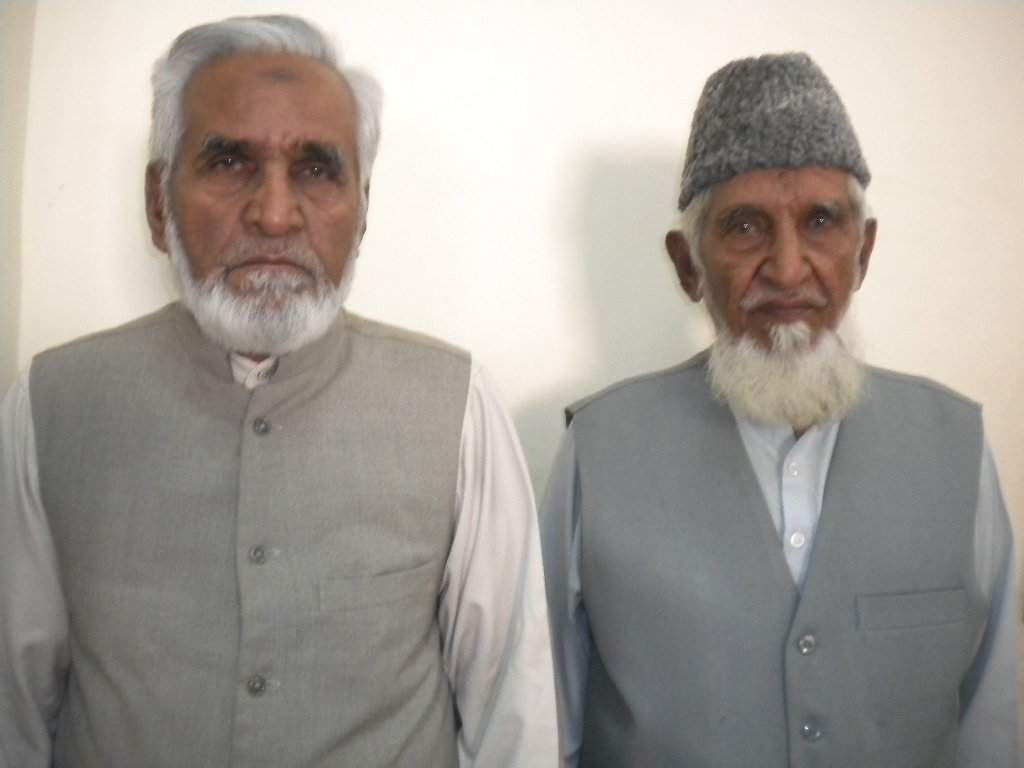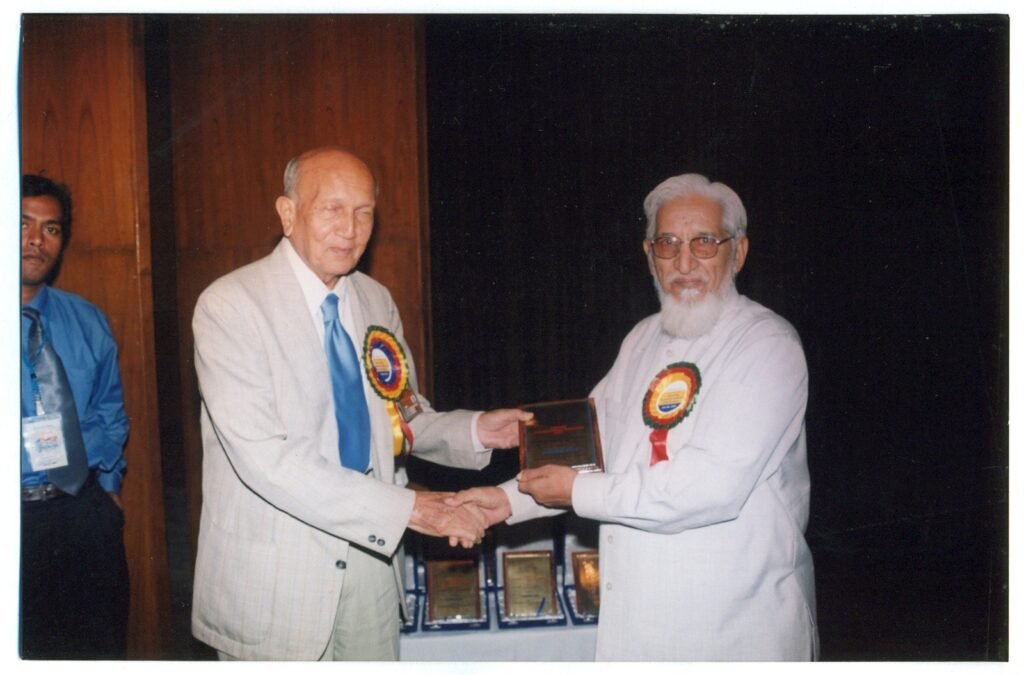
The Beginning
The day I received the permission to publish Engineering Review was a day of immense joy for me. With that permission, I had 90 days to release the first issue of Engineering Review. During this period, Mr. Raza Khattak was appointed as the editor.
These were the days of Zulfiqar Ali Bhutto’s reign. Many industries had been nationalized, and industrialists were intimidated. Workers had turned against mill owners. Seths were being humiliated, surrounded, and sometimes assaulted on a daily basis. The extremity of the situation can be gauged from the fact that Mr. Zameer Sheikh, the owner of Ahmed Food Industries, was thrown into the cauldrons used for opening ghee for making sweets. In such an environment, starting new industries was out of the question. To protect their wealth, Seths began investing in residential flats instead. These flats were sold to ordinary citizens. On one hand, this partially fulfilled the slogan of “bread, cloth, and shelter,” and on the other, there was no fear of nationalization since these flats were owned by the common and middle class. By that time, the construction of flats was widespread across Karachi.
In this context, my understanding of “engineering” was limited to the construction of houses and flats. I initially thought that Engineering Review would be a magazine about construction activities. But right from the start, it took a different direction. This shift happened when, in search of news, Mr. Raza Khattak visited the WAPDA office at Hub Dam. The first news in the second issue (November 1975) was: “Hub Dam Completion: Delay Imminent”
Thus, Engineering Review moved beyond houses and flats and entered the realm of real engineering. Now, we became a representative newspaper for the three major branches of engineering: Civil, Electrical, and Mechanical. Other branches got comparatively less space.
Early Years and Struggles

The first four to five years of Engineering Review were extremely challenging and required immense patience. I was the owner, the office boy, the manager, and the clerk all in one. Every morning, I had to open the office, sweep, and clean. During those days, when anyone asked me about my role in Engineering Review, I would say I was the “Chief Servant” of the institution.
The office boy of a neighboring Ruby Rice Mills advised me that the office should not remain closed when I went out (which happened often). He apparently arranged a clerk for me. A few months later, my father also began coming to the office for half a day to handle correspondence on my behalf.
Engineering Review started with a modest capital of Rs. 18,000, which even in 1975 was a very small amount, and it was depleted within a few months. Advertisers rarely paid on time. Sometimes I borrowed money from my father, siblings, or friends to keep things running. The lack of resources was so severe that not only did I often get physically exhausted, but I would also sit alone and cry. I thought my wife was unaware of my tears.
But my wife understood my struggles well through the deteriorating condition of our household. While cooking lentils, vegetables, or a large piece of meat at home, we usually ate smaller portions during my employment days. Now, this had become rare. Buying clothes and other essentials had stopped. Buying large cuts of meat was also a burden. In these circumstances, a butcher suggested that I buy the neck cut of buffalo or cow meat, which was cheaper than other meat and also tasty. This experiment turned out well.
One day, my wife gently suggested that I should close Engineering Review and take a regular job, which would provide a steady income and ease our household worries. I replied that this was no longer possible. I had taken loans that could only be repaid from the magazine’s revenue, which, God willing, would improve soon.
The Labor of Love
To prepare Engineering Review for mailing, I had entrusted the task of wrapping the copies in paper bands, pasting tickets, and attaching addresses to my father, my younger sister Tayyaba, and other family members. It was, in truth, a labor of love — a family partnership not bound by wages, but by affection and shared pride.
Because of that love, their “payment” was never made — and never demanded.
Among the salaried staff, our editor earned 400 rupees per month, while our clerk received 150 rupees. Somehow, I always managed to pay their salaries by the fifth of every month — no matter how difficult the circumstances.
As for my own salary — also 400 rupees — it was a different story. I often had to pay it to myself in two or four installments, depending on how much money was available.
Don’t Try to Sell the Magazine
It was on the advice of my boss — and the owner of Medical News — Mr. Ayaz Mahmood, that I first decided to launch an engineering magazine. One day, he gave me a piece of advice that sounded quite strange at the time. He said: “Don’t try to sell your magazine. If you do, it will soon shut down.”
Had I not worked at Medical News, I might never have understood what he meant.
At Medical News, we used to distribute about 5,000 to 6,000 copies free of cost every fortnight. The idea behind this “free distribution” was simple yet brilliant — a larger circulation made it far easier to attract advertisers.
When I started Engineering Review, I initially set the circulation at 4,000 copies. It didn’t take long for me to realize that selling even that number was nearly impossible.
And without good circulation, advertising revenue — the lifeblood of any magazine — simply couldn’t flow.
I Have No Right to Publish an Engineering Magazine
Once it was decided that Engineering Review would be distributed free of cost, the next logical step was to obtain the membership list of the Institution of Engineers, Pakistan (IEP) — so the magazine could reach the right audience.
On the surface, this seemed simple enough — but it turned out to be anything but easy.
The IEP Karachi Centre believed that a person who was not an engineer had no right to publish a magazine on engineering. My explanation — that journalism and engineering were two entirely different professions — did little to change their minds.
In their view, I was interfering unnecessarily in a field to which I did not belong. Therefore, they flatly refused to share their members’ list with me.
Since the “straight road” led nowhere, I had to find another way. Fortunately, among the honorary editors I had appointed from different engineering disciplines was Mr. Wali Jan, who managed to obtain the IEP Karachi members’ list for me.
Later, in Lahore, I met Engineer Rab Nawaz Batra, who was then perhaps the Central Secretary of the Institution. He received me with exceptional warmth and generosity — not only did he provide me with the list of members, but he also encouraged my initiative to launch a magazine devoted to engineering.
That day, I truly realized the difference between large-heartedness and narrow-mindedness — and how one gesture of generosity can open doors that prejudice keeps shut.
The Struggles of Composing .

Today, in 2012, composing text for English and Urdu magazines or books is no longer a challenge. Large and small publications alike handle the entire process through computers — clean, quick, and efficient.
But in the 1970s, things were very different.
Back then, composing was a nightmare. A major portion of my time was consumed by arranging for Engineering Review to be composed and by getting Urdu text calligraphed manually.
In those days, major English newspapers and large printing presses used the Hot Metal Composing method. Smaller and medium-sized presses relied on hand setting — placing each letter individually into its proper place, line by line, word by word. It was painfully slow and laborious work.
Many authors’ books and publishers’ magazines never made it to print simply because composing or calligraphy couldn’t be completed on time. Dreams remained dreams — never crossing over into reality.
The English daily The Sun was the first newspaper in Pakistan to adopt a computerized electronic composing system. The setup operated swiftly inside a small air-conditioned room, whereas the old hot-metal machines required large spaces. Each machine had its own furnace for melting lead and casting letters — turning the composing area into something of a furnace itself, where workers toiled in sweltering heat.
I had once been part of The Sun’s first sales team, and as a former employee, I had good relations with its publisher, Mr. M. Parvez. He agreed that the news stories and articles I submitted would be composed and handed back to me the very next day.
But that promise was never fulfilled.
Eventually, I began spending nights at The Sun’s office, hoping that my presence might ensure at least some progress on my material. Yet, even that didn’t work. Later, I was told that my composing would be done before the newspaper’s daily work began — which sounded reasonable.
But that hope, too, turned to dust.
The Blessing of Karamatullah
After the failure with The Sun, I tried having Engineering Review composed at many small and large printing presses. The process was so frustrating that I even considered producing the magazine on a typewriter. But that plan, too, failed.
One day, we met Mr. Karamatullah of Karamat Time Press, Mahmoodabad. And true to his name, he performed a miracle.
Suddenly, the monthly Engineering Review, which had previously been delayed by four or six weeks at a time, started coming out on schedule. Our editor, Riaz-ul-Hassan, began feeling somewhat redundant.
Under these new circumstances, in February 1980, Engineering Review was transformed into a fortnightly publication. This marked our entry into the modern era of composing. Soon, the composing work began to take place in our own office. One chapter of struggle had finally ended. Ah, what a chapter it had been!
Our license for Engineering Review also included provision for Urdu content. A staff member from the daily Huriat would prepare our material on time. But just like English composing, Urdu calligraphy was also a major headache. Many books never even reached the printing stage due to the meddling of scribes
When Urdu, too, began to be composed on computers, the number of books reaching the market increased significantly.
